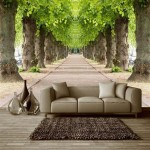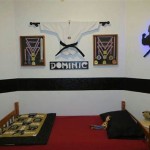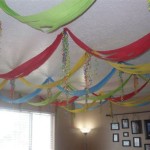How To Decorate A Baby Girl's Bedroom
Decorating a baby girl's bedroom involves creating a nurturing, safe, and aesthetically pleasing environment. Careful consideration should be given to color palettes, furniture selection, décor items, and organizational strategies. The aim is to cultivate a space that fosters comfort, stimulation, and functionality, adaptable to the child's developing needs. The process extends beyond mere aesthetics, encompassing a deep understanding of child development and safety standards.
A thoughtfully designed baby girl's bedroom can contribute significantly to the baby's well-being. The environment shapes the initial sensory experiences, influencing their perception of the world. The room should be a sanctuary, combining elements of serenity and visual interest. Balancing these aspects is crucial for creating a space that promotes restful sleep and encourages early exploration.
Choosing a Color Palette
The color palette forms the foundation of any room's design. While traditional choices often lean towards pink and pastels, exploring a broader range of colors can yield more sophisticated and stimulating results. Neutral colors like beige, gray, or white offer a versatile backdrop that can be accessorized with pops of color. Consider incorporating soft greens, yellows, or lavenders for a calming and inviting atmosphere. The chosen colors should reflect the desired mood and complement the overall aesthetic.
The impact of color psychology should be considered when selecting a palette for a baby girl's bedroom. Soft, muted tones tend to promote relaxation and sleep, while brighter colors can stimulate activity and engagement. However, excessive use of vibrant colors can be overstimulating for a baby. A balance should be struck between creating visual interest and maintaining a sense of tranquility. One approach is to use neutral wall colors and incorporate brighter hues through accessories like bedding, artwork, and rugs.
The interplay of light and color deserves attention. Different colors appear differently under varying lighting conditions. Natural light enhances the vibrancy of colors, while artificial light can alter their tones. It is advisable to test paint samples under both natural and artificial light to ensure the desired effect is achieved. Selecting paint with a matte or eggshell finish minimizes glare and creates a softer, more inviting ambiance.
Consider incorporating texture into the color scheme. Textured wallpaper, fabric wall hangings, or even strategically placed textured paint can add depth and visual interest to the room. These elements can create a tactile experience, contributing to the baby's sensory development. Subtle patterns, such as faint stripes or floral motifs, can also enhance the overall aesthetic without being overwhelming.
A monochromatic color scheme can be implemented effectively by using different shades and tones of the same color. For instance, varying shades of pink, from pale blush to deep rose, can create a sophisticated and harmonious effect. This approach allows for a cohesive design while adding visual interest through subtle variations.
Selecting Furniture and Layout
Furniture selection is a pivotal aspect of decorating a baby girl's bedroom. A crib that meets current safety standards is paramount. The crib should have a firm mattress and be free from any loose parts or decorative elements that could pose a hazard. The placement of the crib should be considered carefully, avoiding direct sunlight or proximity to radiators or vents.
A comfortable and supportive rocking chair or glider is an essential addition to the room. This provides a dedicated space for feeding, comforting, and bonding with the baby. The chair should be ergonomically designed to support the back and arms, minimizing strain during extended periods of use. A footstool or ottoman can further enhance comfort.
A changing table with ample storage is crucial for diaper changes and dressing. It should be equipped with safety straps and a non-slip surface. The storage compartments should be easily accessible, allowing for convenient access to diapers, wipes, and other essential items. The changing table can also double as a dresser, providing additional storage space for clothing and accessories.
Storage solutions are essential for maintaining an organized and clutter-free environment. Consider incorporating shelves, drawers, and baskets to store toys, books, and other items. Utilizing vertical space with tall shelves or wall-mounted organizers can maximize storage capacity. Clear storage containers allow for easy identification of contents, streamlining organization.
The layout of the room should prioritize safety and functionality. Ensure that furniture is arranged in a way that allows for easy movement and avoids creating any obstacles. Electrical outlets should be covered with safety caps. Cords from blinds or curtains should be secured out of reach to prevent strangulation hazards. The furniture should be arranged in a manner that promotes a sense of openness and flow, making the room feel comfortable and inviting.
Incorporating Décor and Accessories
Décor and accessories provide the finishing touches to a baby girl's bedroom, adding personality and charm. Wall art, such as framed prints or canvases, can enhance the aesthetic appeal of the room. Choose artwork that is calming and visually stimulating, featuring soft colors and whimsical themes. Avoid overly complex or abstract designs that may be confusing for a baby.
Mobile are classic décor items for baby rooms, providing visual and auditory stimulation. Select a mobile that features soft colors, gentle movement, and soothing sounds. Ensure that the mobile is securely attached to the crib and positioned out of the baby's reach. Mobiles can help to calm and entertain the baby, promoting visual tracking and auditory development.
Textiles play a crucial role in creating a comfortable and inviting atmosphere. Soft blankets, plush rugs, and cozy cushions can add warmth and texture to the room. Choose fabrics that are hypoallergenic and easy to clean, such as cotton or microfiber. Consider incorporating different textures to stimulate the baby's tactile senses.
Lighting is an essential element of décor and should be carefully considered. A dimmer switch allows for adjusting the light levels, creating a more relaxing atmosphere for bedtime. A nightlight is also a useful addition, providing a soft glow that helps to soothe the baby during the night. Avoid using harsh or bright lighting, as this can be overstimulating.
Personalized touches can make the room feel even more special. Consider incorporating elements that reflect the baby's name, birth date, or other personal details. Custom-made wall art, personalized blankets, or embroidered pillows can add a unique and sentimental touch. These personal touches can create a sense of belonging and contribute to the baby's emotional well-being.
Safety should always be the primary concern when selecting décor and accessories. Avoid using small or loose items that could pose a choking hazard. Ensure that all wall art is securely mounted and out of the baby's reach. Regularly inspect décor items for any signs of wear or damage, and replace them as needed. The goal is to create a visually appealing and stimulating environment that is also safe and secure.
The selection of decorative elements should align with the overall theme and color palette of the room. Maintaining consistency in style and color creates a cohesive and harmonious look. Consider incorporating elements that reflect the baby's personality and interests, even at a young age. The décor should evolve as the baby grows, adapting to their changing needs and preferences.


Pin On Decor Ideas


Blush Pink Nursery Paper Flowers Wall Decor Baby Girl Room

Little Girl Room Ideas 1 Bedroom 2 Diffe Looks Baba So

A Little Girls Bedroom

Pin On Interior Design

Girls Princess Bedroom Design Ideas The Children S Planner

11 Little Girl Room Decor Ideas You Will Love

Baby Girl Room Decor The Sweetest Nursery Diy Mom
Related Posts







